
The Frankfurter Zeitung was a German-language newspaper that appeared from 1856 to 1943. It emerged from a market letter that was published in Frankfurt. In Nazi Germany, it was considered the only mass publication not completely controlled by the Propagandaministerium under Joseph Goebbels.

The Völkischer Beobachter was the newspaper of the Nazi Party (NSDAP) from 25 December 1920. It first appeared weekly, then daily from 8 February 1923. For twenty-four years it formed part of the official public face of the Nazi Party until its last edition at the end of April 1945. The paper was banned and ceased publication between November 1923, after Adolf Hitler's arrest for leading the unsuccessful Beer Hall Putsch in Munich, and February 1925, the approximate date of the relaunching of the Party.
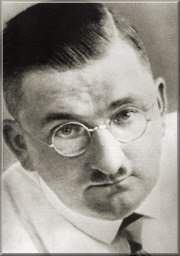
Carl Albert Fritz Michael Gerlich was a German journalist and historian, and one of the main journalistic resistors of Adolf Hitler. He was arrested, later killed and cremated at the Dachau concentration camp.
The Vossische Zeitung was a nationally known Berlin newspaper that represented the interests of the liberal middle class. It was also generally regarded as Germany's national newspaper of record. In the Berlin press it held a special role due to the fact that by way of its direct predecessors it was the oldest newspaper in the city. The name went back to Christian Friedrich Voss, who was its owner from 1751 to 1795, but Vossische Zeitung became its official name only after 1911. It ceased publication in 1934 under pressure from the Nazi state.
Friends of New Germany, sometimes called Friends of the New Germany, was an organization founded in the United States by German immigrants to support Nazism and the Third Reich.
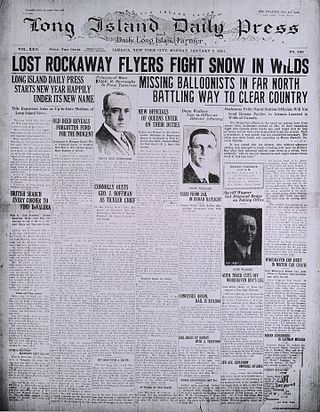
The Long Island Daily Press was a daily newspaper that was published in Jamaica, Queens. It was founded in 1821 as the Long Island Farmer. The paper’s founder, Henry C. Sleight, was born in New York City in 1792, and raised in Sag Harbor, Long Island. Sleight got his start as a newspaperman when he worked on the staff of the Suffolk County Gazette, a weekly newspaper published in Sag Harbor. During the War of 1812 Sleight enlisted in the army and saw action on the Kentucky frontier. After the war he remained in Kentucky for a few years, during which time he published another weekly newspaper, the Messenger, and later went into the mercantile business. After suffering heavy business losses due to a fire, Sleight returned to New York and settled in Jamaica, where he established the Long Island Farmer.
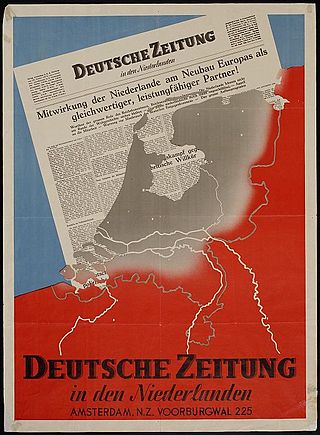
The Deutsche Zeitung in den Niederlanden was a German-language nationwide newspaper based in Amsterdam, which was published during almost the entire occupation of the Netherlands in World War II from June 5, 1940 to May 5, 1945, the day of the German capitulation in the "Fortress Holland". Its objective was to influence the public opinion in the Netherlands, especially the one of the Germans in this country.

Illinois Staats-Zeitung was one of the most well-known German-language newspapers of the United States; it was published in Chicago from 1848 until 1922. Along with the Westliche Post and Anzeiger des Westens, both of St. Louis, it was one of the three most successful German-language newspapers in the United States Midwest, and described as "the leading Republican paper of the Northwest", alongside the Chicago Tribune. By 1876, the paper was printing 14,000 copies an hour and was second only to the Tribune in citywide circulation.
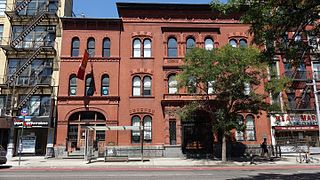
The Ottendorfer Public Library and Stuyvesant Polyclinic Hospital are a pair of historic buildings at 135 and 137 Second Avenue in the East Village neighborhood of Manhattan in New York City. The buildings house the Ottendorfer Branch of the New York Public Library, as well as the women's workspace The Wing within the former Stuyvesant Polyclinic hospital.
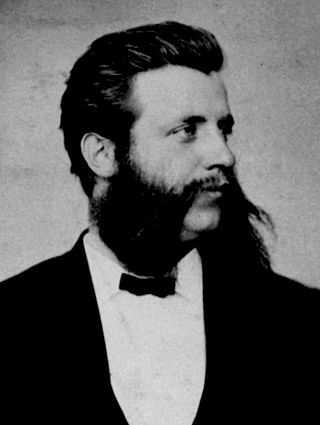
Valentin Oswald Ottendorfer was a United States journalist associated with the development of the German-language New Yorker Staats-Zeitung into a major newspaper. He served a term as a member of the New York City Board of Aldermen and as a member of the Board of Regents of the University of the State of New York. He also served three times as an elector of the United States Electoral College. In addition to his political and journalistic pursuits, Ottendorfer was a notable philanthropist in both Europe and the United States. Today, he is best remembered as the donor whose contribution founded the Ottendorfer Public Library in Manhattan, which bears his name.
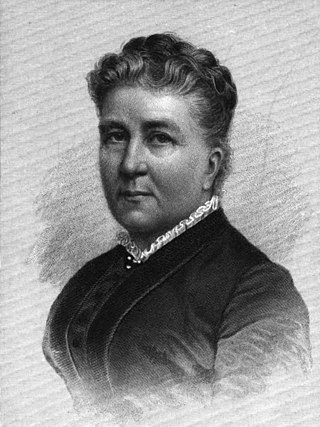
Anna Ottendorfer was a German-American journalist and philanthropist. She was associated with the development of the German-language New Yorker Staats-Zeitung into a major newspaper.

The Süddeutsche Zeitung, published in Munich, Bavaria, is one of the largest daily newspapers in Germany. The tone of SZ is mainly described as centre-left, liberal, social-liberal, progressive-liberal, and social-democrat.

Herman Ridder was an American newspaper publisher and editor.

Gustavus Adolphus Neumann was born on May 20, 1807, in Görlitz on the Neisse River, Saxony. Neumann has been labeled "one of the ablest German-American editors" of his time. His editorials dealt with, among other topics, the Americanization of the immigrant, and expressed strong and clear ideas on the subject.
German American journalism includes newspapers, magazines, and the newer media, with coverage of the reporters, editors, commentators, producers and other key personnel. The German Americans were thoroughly assimilated by the 1920s, and German language publications one by one closed down for lack of readers.
Oregon Deutsche Zeitung, launched in 1867, was the first of several German language newspapers published in the U.S. state of Oregon.

The Neu England Rundschau was a weekly German language newspaper published by The German-American Publishing Company, Wisly Lithograph Company, and subsequently the Wisly-Brooks Company, Inc. of Holyoke, Massachusetts from 1883 until 1942, the longest running German newspaper in Massachusetts. A second edition of the paper was also sold in Connecticut under the masthead Connecticut Staats-Zeitung. Following scrutiny by the US Department of Justice and Office of Strategic Services of the broader German American press, as well as declining circulation, the paper ceased publication in 1942 during the Second World War.
Joseph Edward Ridder was an American newspaper publisher who was the chairman of Ridder Publications. He was the son of newspaper magnate Herman Ridder.
The New-Yorker Abend-Zeitung was a daily evening German language newspaper in New York City published from 1851 to 1874 that directly competed with the Democratic New Yorker Staats-Zeitung.




















